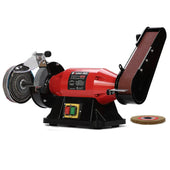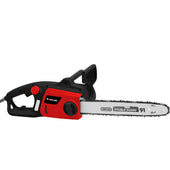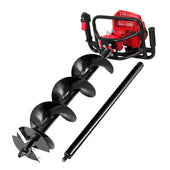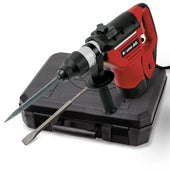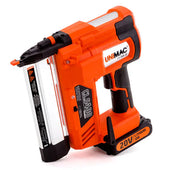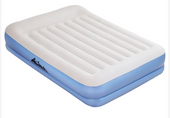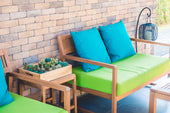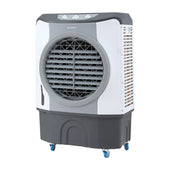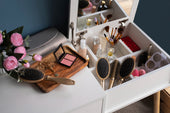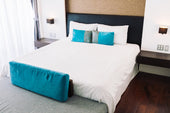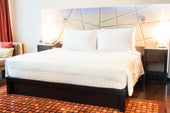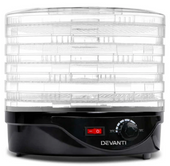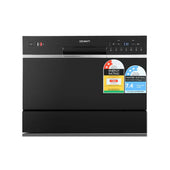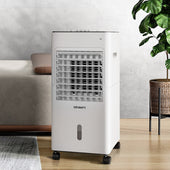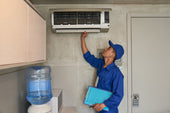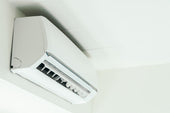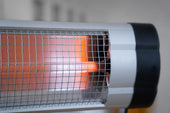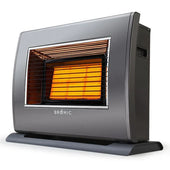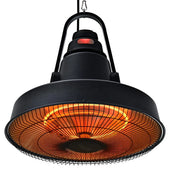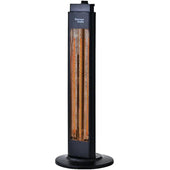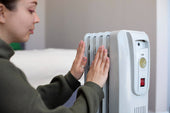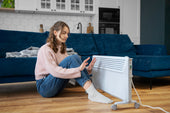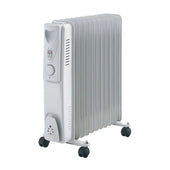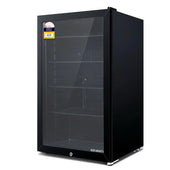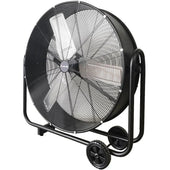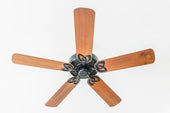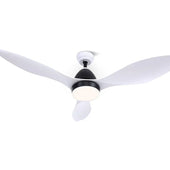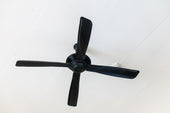
Rabbits make for the most doting pets. Don’t you think that their fluffy fur adds to their cuteness overload? Moreover, think about their have cotton tails, bunny ears, and soul-penetrating eyes. They are indeed a must-have pet to own once in a lifetime! Unlike cats, they are social and extremely easy to train. They are cheaper to maintain and aren’t too messy either. All these traits make rabbits the perfect addition to your family if you are searching for a pet that would help you beat the daily stress.
If you’ve adopted your first rabbit or if you are curious to know more information to help you understand them better, you should know that rabbits are social animals and they need enough space to happily roam about. A rabbit can be an easy prey for the neighborhood cat or be manhandled by a curious kid. If you are looking out to buy a hutch, you are being a responsible owner and that’s terrific! For the love of your rabbit, get it a hutch that it will love hopping in from a corner to another. Hutches are after all the most popular form of accommodation for bunnies. A good hutch will do wonders for your rabbit and reward you with a happier pet.

If you’re still confused about buying a rabbit, read on as we list down seven reasons why you should get a bunny for your house, pronto:
- Shhh… they’re quite quiet: Rabbits are peaceful creatures. They don’t bark, claw, or raise the roof above their heads when they need your attention. Your neighbors would love you for your choice of adopting a rabbit as a pet.
- They love their owners: Rabbits can recognize its owner by sight and voice. It forms a close personal bond with their owner which means that you and your furry friend will soon be going out for strolls together.
- They don’t need a lot of space: If you do not want your pet to take up a lot of space, buy a rabbit. They take up less amount of space than other common pets. They can be kept both outdoor and indoor. All they need is just enough space to hop at least four consecutive hops. This makes them a perfect pet to have even if you are staying in a small apartment.
- Training them is easy: Think of all the tricks that you have seen a bunny do. They can jump through obstacles, hop through hoops, play fetch, and run through mazes at ease. It is easy to train them with just a few hours of practice sessions conducted over the course of a few days. You can also teach them to use a litterbox in a few days. You can use the same tricks and styles to train a rabbit like you would to train a dog.
- They have a long lifespan: Pet rabbits can live for eight to twelve years if cared for properly. Get a rabbit if you are searching for an alternate pet to adopting a dog/cat which will stay with you for years to come. Most of the smaller mammals like hamsters, guinea pigs, etc. do not have a long lifespan like the rabbits. You will need to take adequate measures to save your rabbit from threats like predator attacks, climate fluctuations, infections, injuries, etc.
- You are spoilt for choices when adopting a rabbit: Rabbits come in various size, shapes, and colors which mean that you can choose from a wide variety of rabbits’ breeds depending on your personal favorite. There are over 50 categories of rabbits that you can choose from for your next pet. Each breed of rabbit varies in size, color, and displays its own traits. Spend some time in identifying these traits which best meet your own traits.
- You do not need a cleaning crew: Rabbits can be so easily litterbox-trained that you will wonder why it is so hard to train other pets to stop making such a mess while doing their business. You can put straws and hay as beddings for the hutches which will absorb the wet waste in the hutch. Brushing them is easy and you can do it once every few days to keep them clean.

Indoor or outdoor - where should your rabbit live?
There is the age old question of where should you house your rabbits – inside or outside? Rabbits can be good companions as house rabbits or even when they are left outdoors. Rabbits are active animals that have been traditionally thought of as outdoor pets. If you intend to keep them inside your house, make sure that you offer them an accommodation that allows them to behave in a normal way i.e by giving them enough room to hop and play around. It is better to share your house with rabbit indoors when they are young. You can regulate the room temperature. You can let it roam outside for soaking in the sunlight and for its share of fun in safe enclosures and under your vigilance. Keeping your rabbits indoor or outdoor is a personal choice. Both of them have their own advantages.
If you are placing the rabbit outdoors, make sure that your rabbits get to exhibit their natural behavior in their habitat. This includes running, hopping, climbing, jumping, burrowing etc. Make sure that you provide them with more than three square metres enclosure. You will need to ensure that the enclosure is insect-proof because rabbits are prone to bug attacks. Ensure that the enclosure has a private place for the rabbit to sleep or hide. If you are housing the hutch outdoors, try to refrain from using metal wires and clutches as they will heat up during the summer. You will need to monitor the temperature outside so that you can move the rabbits under a shed when the temperature soars. Include a private run with more than 4 hops or 8 feet of distance for the rabbit with ready access to the hutch. You can also create the hutch on a lawn bed. Bunnies like grasses and it is beneficial for their teeth and digestive system. You will need to be wary about the rabbit not digging a tunnel out of the hutch. Ensure that you give the rabbit more than two hours of human-rabbit interface for it to be comfortable around your presence.
Keeping the rabbits indoor allows you to spend more time with the rabbit. They are an absolute joy to have as pets. They can be easily toilet-trained. Keeping them indoors also saves them from insect bites and predator attacks. Remember to rabbit-proof rooms where you can let the rabbit wander around freely. You can also have portable hutches that can be pushed away to different sections of the house. Keep the rabbits in your sights. Giving them free reigns to the entire house or your backyard is a bad idea. They are prone to dust and develop breathing problems when exposed to too much dust and dirt. Having them indoors helps them to stay in a dust-free and temperature regulated environment which improves their wellbeing.

What makes a good hutch?
One of the most important criterions while building a hutch is space. You need to buy a hutch with copious amount of space for them to be able to freely roam around. Make sure that you buy the biggest hutch for your rabbit based on its size. Rabbits are social animals. They do not like isolation. It will be a good idea for you to get your rabbit a cute little companion. If you’re averse to breeding, neuter your rabbit before you add another roommate for it in the hutch. In that case, ensure that your hutch is a deluxe one and big enough to be home for both the rabbits at the same time.
While the hutches can come in different forms and types, its primary function is to provide a safe enclosure to your rabbits. Wood is the most preferred form of material used for building outdoor hutches. Ensure that your hutch has a quiet enclosed corner which will function as the sleeping area for your rabbit. It is important that you safeguard this section of the hutch with adequate cover so that it is impenetrable from cat and other similar attacks. It is also the area where your rabbit will scamper to when it feels frightened by lurking animals. A hutch needs to be adequately ventilated for the rabbit. It will get quite dirty quite often. Make sure that you regularly clean the hutch’s interiors. A mesh of wire on the outside coupled with the wooden cage can serve to provide adequate protection to your rabbits.
Rabbits confined in small cages may get bored, overeat, show muscle wastage due to a lack of proper exercise. Give them free access to hay for chewing. Having a hutch mate will make them jovial. Multi-layered or double-decker cages would give the rabbits some much-needed exercise in the hutch.
A rabbit will consider his hutch as its safe house. It will have a safe corner in the hutch where it will run to if it senses danger. It will use this corner to sleep, eat, hide from the predators, and rest. Place a small cardboard box in that section of the hutch so that the rabbit can snuggle in it to keep warm and sleep. You can also use the cardboard to cover the sides of the cage so that the rabbit is hidden from the line of sight of any watchful predator.
What sort of flooring should you opt for in the hutch?
The floor of the hutch can be made using concrete or wire depending on your preference. A wooden floored hutch will shield the rabbit from cold and give it a comfortable footing. Use of wires for flooring purposes will give you better conveyance when cleaning the hutches. Wire meshing is also used for the exterior of indoor hutches. They are much easier to clean and maintain. They are lighter in comparison to the wooden cages and can be easily lifted across to other corners of your house. It also offers better ventilation to your rabbit.
It is good to offer a solid floor to the hutch instead of wired flooring which may hurt the rabbit in prolonged uses. Since rabbits do not have padded paws or hoofs like dogs or horses, it is very painful for them to stand on the wired floor for long periods of time. If you are opting for wired flooring, at least keep the one-third section of the surface covered by solid material so that the rabbit can go there to rest. You can also opt for vinyl flooring which is a safer alternative since it is non-slippery in nature. Solid floorings are much more durable to use and you can clean it with a sweeping motion.
Why does size matter when choosing a hutch?
Wild rabbits cover the length of multiple football fields or nearly 30 tennis courts while scourging for food in the wilderness. The rabbit’s anatomy is designed for hopping and field grazing. If your hutch lacks adequate space, you are exposing your rabbits to Osteoporosis. This results in weaker bones that may result in spinal or leg fractures later on. They can also turn obese and result in heart-related problems.
Domesticated rabbits need the same amount of exercise to stay healthy. In order to do so within the confines of a hutch, the hutch should have ample amount of space for them to run about. Research has revealed that bunnies need at least 6ft x 2ft x 2ft of floor space inside the hutch with an additional 8ft x 4ft x 4ft space allocated for them to run with the two places conjoined together. A normal hutch found in the pet shops is considered too small for this purpose. Even the hutches which are labeled as ‘mansions’ can be deceiving in nature and may in fact be smaller than the mandated dimension.
One way to increase the real estate of a hutch is by using multiple tiers within the structure. Connect the multiple levels with ladders and holes to add more of space available. We have become accustomed to seeing rabbits in smaller cages. The length of the space available inside the hutch should be equal to at least four of its hops. This doesn’t accounts for the maximum size of the rabbit that it will achieve in its adulthood. While buying a hutch, remember to take into consideration the final size your rabbit will attain in its prime.
Rabbits are active animals with strong hind legs. They need ample exercise in the absence of which their muscles will start to deteriorate. One way to stop their muscle wastage is by providing bigger hutches and taking them out of their home every day for exercise under your surveillance. Remember to bunny guard your lawn/room if you are taking them out of their hutches. Think of the maximum size of hutch that you can afford for your rabbit and buy it without deliberating much on the cost. The cost of the hutches would increase with its size. It is also the place where the rabbit and its fellow companions will stay for the majority of their lives. Rabbits without enough space will become bored or fall sick to mental or physical illness. Smaller-sized hutches would be easily dirtied by feces and urine resulting in a dirt environment for the rabbit. Having a larger-sized hutch would also let you fix more accessories in the hutch. Double the size of the hutch you have in mind if you will be housing two rabbits in it. You should double the hideout areas in the hutch so that it gives your rabbits two escaper areas to hide in if they’re scared.
What are the different types of materials that you can use for the bedding?
From newspapers to wood pellets, you can use different materials as bedding for your hutch. Not all type of bedding Newspapers are the easiest available material at your disposal for the bedding. The newspapers form an even padding on the hutch’s floor. The issue with having newspaper padding is that they are easily destructible. Rabbits can easily tear the newspapers apart and all the ink used for printing on the newspaper may not be good for your rabbit if ingested in large quantities. Shredded cardboards offer a better alternative compared to newspapers to be used as bedding.
If you own cats, chances are that you will have a ready stash of wood pellets to fill in your cat’s litter trays. You can use similar pellets for the bedding in your rabbit’s hutch. Even though it offers good absorbency, it is quite brittle and heavy to use. You can use paper pellets instead. Paper pellets are made using recycled paper. You can use them to offer your rabbit environmental friendly bedding. They too offer adequate absorbency like the wood pellets while being significantly lighter in weight. You can also use paper pulp which is made using recycled paper for the bedding. Paper pulp beddings are highly absorbent. They can soak in large quantity of water and bad odor which makes them ideal for the use.
While the softwood litters are the most commonly used type of bedding material for the rabbit’s coop, it is certainly not the safest. Study has shown that use of softwood litters like sawdust or pine shavings in the coops may lead to liver diseases in small animals including rabbits. If you have to use softwood litters, it is recommended that you shield it with a thick layer of hay.
Rabbits love hays. In fact, hays should be provided in abundance to your rabbit. While they like nibbling on hays, it also makes for a good bedding material. Straws can be used to cover the floor of the hutches too as they provide good insulation. A good insulation is imperative for the rabbit to protect it from the famed Australian summer. During summers, the entire country from Adelaide to Newcastle and from Melbourne to Sydney is facing the flak of the sun. Your hutch is the first protection barrier for the rabbit against the heat stroke. Ensure that the hutch is well ventilated so that the hot air gets an outlet to escape.
You need to take a few precautionary measures to ensure that your rabbit lives a fulfilling life. You will need to give it a roomier hutch to call its home with ample space to exercise. You can include a run which will help the rabbit to complete a few hops and do its natural activities like dig a burrow. You will need to ensure that the rabbit isn’t dehydrated during summers. You should add a companion for the rabbit if you do not want it to be stressed or lonely. Rabbits are low-fuss animals to own. They are quiet and easily trainable. There are over 50 species of rabbits that you can choose from while considering it as your next pet. So, what are you waiting for? Go to a shelter and adopt a new companion. Visit During Days to go through a wide variety of rabbit hutches that may range from wooden to metallic and from single-level guinea pig hutches to multi-level hutches. Choose the best hutch that you can buy for your rabbit and DuringDays will deliver it to you at your doorstep.















































